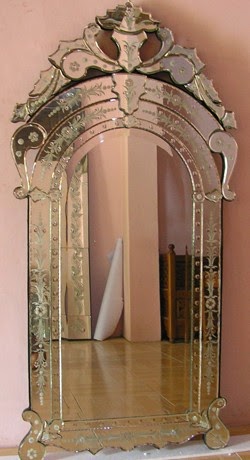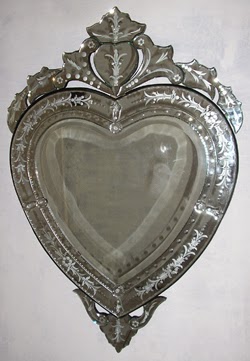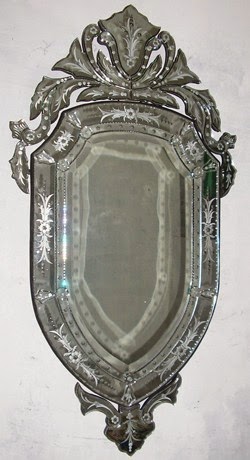
decorative mirror __ This article is about wave reflectors (mainly, specular reflection of visible light). For other uses, see Mirror (disambiguation).
"Looking glass" redirects here. For other uses, see Looking Glass (disambiguation).
Barack Obama, the currentPresident of the United States, looks in a mirror before taking the oath of officeat the Capitol on 20 January 2009.
A first surface mirror coated with aluminum and enhanced with dielectric coatings. The mirror was constructed from an optical flat with a flatness of /20, which equates to a surface deviation less than 31.6 nanometers.
A mirror is an object that reflects light in a way that preserves much of its original quality subsequent to its contact with the mirror.
Some mirrors also filter out some wavelengths, while preserving other wavelengths in the reflection. This is different from other light-reflecting objects that do not preserve much of the original wave signal other than color and diffuse reflected light. The most familiar type of mirror is the plane mirror, which has a flat surface. Curved mirrors are also used, to produce magnified or diminished images or focus light or simply distort the reflected image.
Mirrors are commonly used for personal grooming or admiring oneself (in which case the archaic term looking-glass is sometimes still used[clarification needed]), decoration, and architecture. Mirrors are also used in scientific apparatus such as telescopes and lasers, cameras, and industrial machinery. Most mirrors are designed for visible light; however, mirrors designed for other types of waves or otherwavelengths of electromagnetic radiation are also used, especially in non-optical instruments
Çontact
Us
Address :
Jln. Bonang 3 RT 2 RW 2, Joyotakan, Serengan, Surakarta, Jawa Tengah,
Indonesia, Indonesia 57157Owner : Prima Warsa BaruPhone : +62
888 6 827 827Email : sales@jagomerahcraft.comFanpage Facebook :
jagomerahcraft










